24 Sep Relationship between mycotoxin contamination in feed and necrotic enteritis
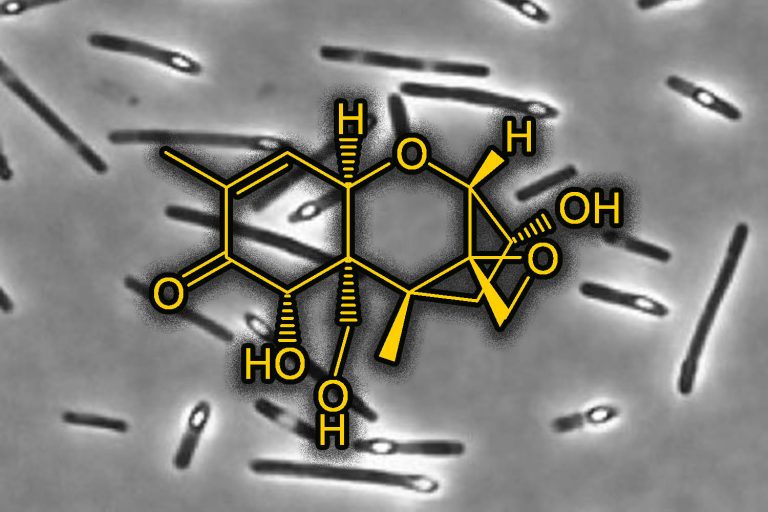
Necrotic enteritis, a bacterial infection caused by Clostridium perfringens, is one of the most common poultry diseases worldwide.
The acute form of the disease leads to increased mortality (up to 1% per day) together with the general and digestive signs that we described in this article.
In the subclinical form, the damage to the intestinal mucosa caused by C. perfringens leads to a worsening of the growth rate and the feed conversion ratio. The occurrence of the subclinical form has increased in countries where the use of antibiotic growth promoters has been reduced or banned.
Clostridium perfringens is a bacterium that is naturally present in the environment of the farm, in feed and in the gastrointestinal tract of healthy animals and humans. The disease starts when there is an abnormal overgrowth, especially in the small intestine. An intestinal environment with a high concentration of proteins, as well as low immunity and gut flora imbalance, promote the overgrowth of Clostridium perfringens.
Mycotoxin contamination predisposes for the development of necrotic enteritis
It has been demonstrated that mycotoxin contamination in feed predisposes for the development necrotic enteritis.
There are four possible mechanisms of action for mycotoxin toxicity in necrotic enteritis:
1. Mycotoxins have a negative impact on the morphology of the intestinal epithelium
Deoxynivalenol and fumonisins have been reported to reduce the length of the small intestine, the height of the villi and the depth of the crypts. Such changes reduce the surface available to absorb nutrients, which ultimately results in an increase of non-absorbed feed proteins in the lumen of the intestine, promoting the growth of Clostridium.
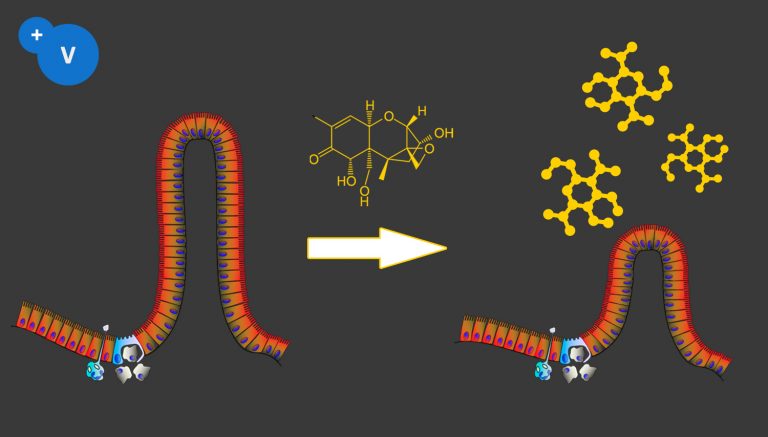
2. Mycotoxins alter the epithelial barrier function
Deoxynivalenol, fumonisins and ochratoxin A have a toxic effect on the intestinal epithelial cells and on tight junctions, disrupting the intestinal barrier (learn more about the importance of gut barrier here). The epithelium becomes more permeable and proteins from the plasma leak into the lumen of the intestine, promoting the growth of Clostridium.
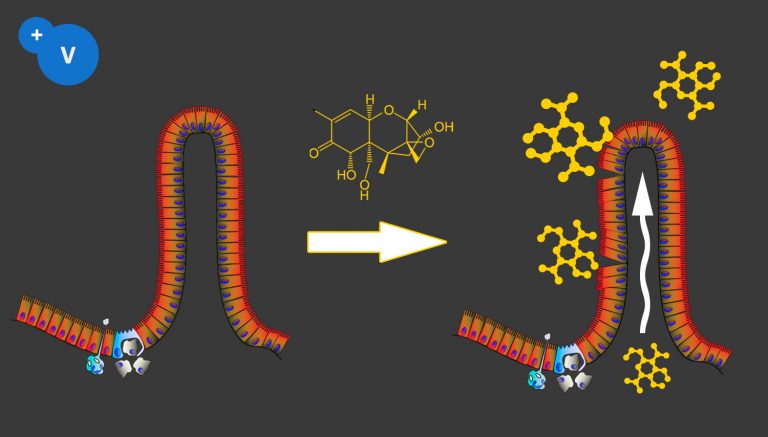
3. Mycotoxins depress local digestive immune system
In poultry, more than 70% of the immune defenses are located in the digestive system, spread through the GALT (gut-associated lymphoid tissue), Peyer’s patches, mesenteric lymph nodes, and cecal tonsils.
Whenever there is a disfunction of the local digestive immunity, it is easier for pathogenic bacteria such as Clostridium perfringens to proliferate.
There are four main groups of mycotoxins that impair the digestive immune system:
- Aflatoxins and ochratoxins decrease the production of antibodies (immunoglobulins A and M)
- Fumonisins and trichothecenes reduce the production of interleukins and interferon (small proteins that regulate the immune responses).
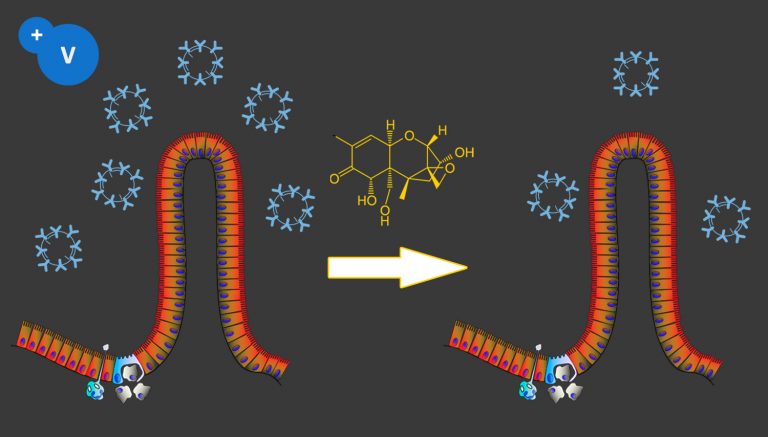
4. Mycotoxins affect the composition of digestive microbiota
The effect of mycotoxins on intestinal microbiota is not clearly understood yet, but, as mycotoxins have antibacterial activity, presumably they cause imbalances in intestinal microbial populations that may potentially lead to an overgrowth of pathogens such as Clostridium perfringens.
Recent research has shown that, in poultry:
- The continued ingestion of fumonisins during two weeks reduces the diversity of the ileal microbiota.
- Exposure to fumonisins, aflatoxins and ochratoxins diminishes the count of Lactobacillus species
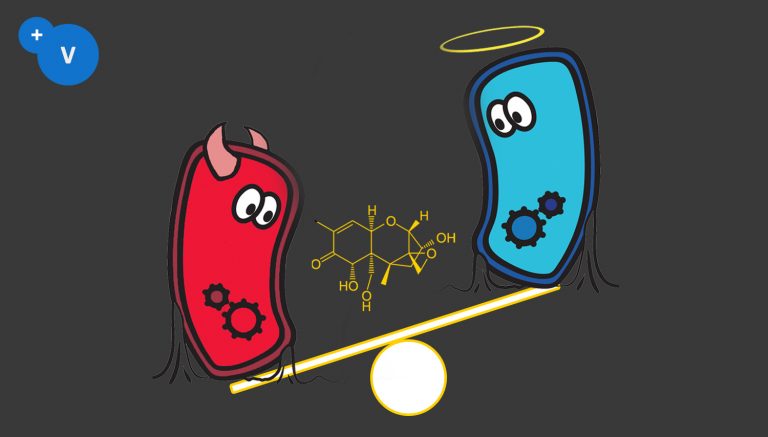
In conclusion
Whenever there is an outbreak of necrotic enteritis or the suspicion of a subclinical infection by Clostridium perfringens, it is necessary to investigate the mycotoxin contamination of the feed as one of the possible causes.
Products of choice
GrowthPlus© is added to feed to maintain and improve digestive health. It is formulated with synergistic ingredients:
- Bactericidal and fungicidal plant extracts, combined with organic acids for better effectiveness, that reduce the number of pathogenic microbes in the digestive system.
- Plant extracts with prebiotic effect, that promote the growth of beneficial bacteria in the gut.
- Immunostimulant and antioxidant plant extracts.
- Silicates with mycotoxin binding function.
It is especially useful in cases of gizzard diseases, necrotic enteritis, feed passage and other enteritis. It is also used as a natural growth promoter and to replace antibiotic growth promoters.
PlusProtect Digestive© is intended for digestive health in birds and rabbits of all ages. It is formulated with synergistic ingredients:
- Essential oils with bactericidal and fungicidal activity
- Plant extracts with prebiotic effect.
- Immunostimulant and antioxidant essential oils
PlusProtect Digestive© is useful to improve gut health in the following cases:
- Candidiasis in beak, crop and gizzard
- Bacterial infections in gizzard. In severe cases, it is better to give together with our PlusBind© line (mycotoxin binders)
- Bacterial infections in the intestines (necrotic enteritis; E.coli; Salmonella sp.)
- General digestive imbalances, such as feed passage.
PlusBind© is a mixture of carefully selected silicates intended for the prevention of diseases and productivity losses related to the presence of all types of mycotoxins. It is indicated in poultry, pigs, aquaculture and ruminants.
The silicates present in PlusBind© have a highly expandable molecular structure. This characteristic gives the product a wide surface available for the adsorption of mycotoxins and therefore allows a high effectiveness at lower doses (0.5-1 kg per ton of feed).
PlusBind Bio© is a mixture of carefully selected silicates intended for the prevention of diseases and productivity losses related to the presence of all types of mycotoxins. It also contains plant extracts with prebiotic effect.
It is indicated in poultry, pigs and aquaculture.
The silicates present in PlusBind Bio© have a highly expandable molecular structure. This characteristic gives the product a wide surface available for the adsorption of mycotoxins and therefore allows a high effectiveness at lower doses (0.5-1 kg per ton of feed).

Certain health statements may not be applicable in your region.

